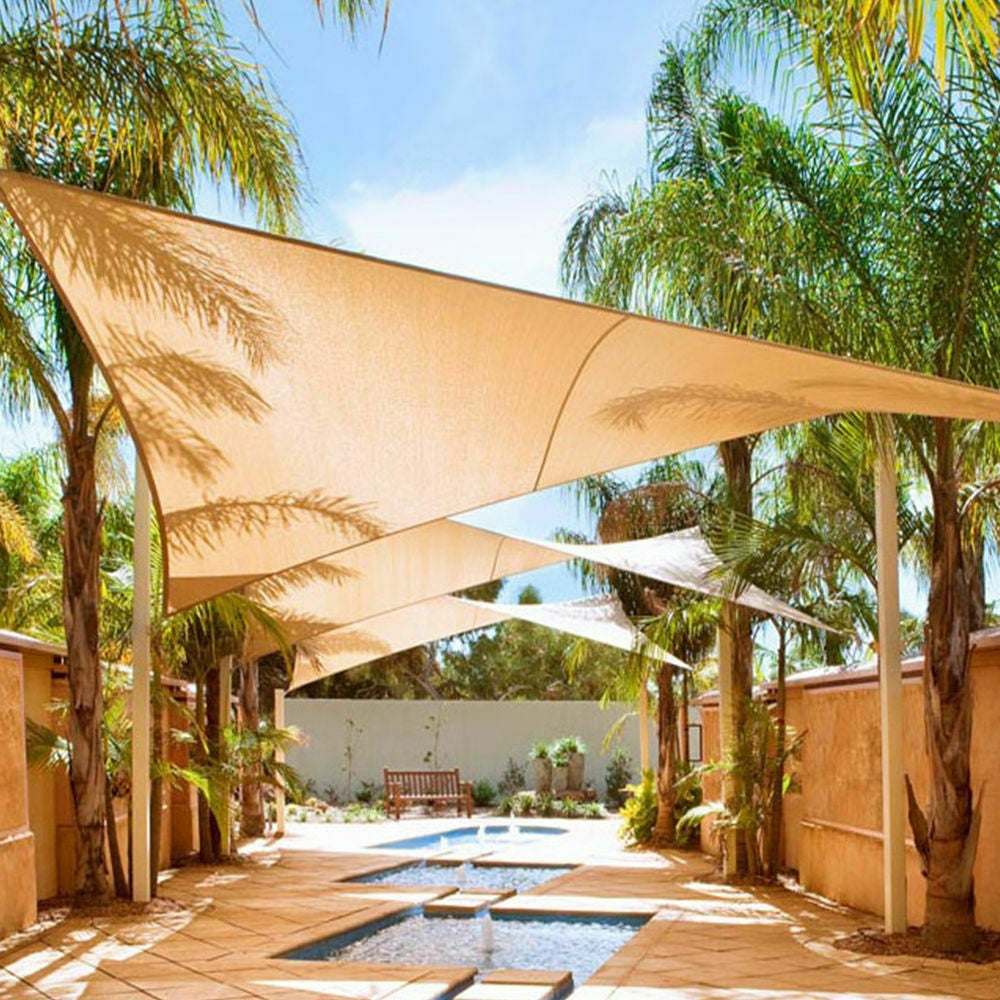

If you live in an area with harsh winters, you may want to stow your shade sail until spring. Beyond UV protection, shade sails are built to withstand varied weather conditions, especially rain and wind.
#Sun shade sail skin#
Like sunscreen, sun shade sails are designed to protect your skin and eyes from the sun’s harmful rays. Look for fabrics with 90 percent UPF (ultraviolet protection factor) or higher. Weather ResistanceĪll shade sails should offer maximum sun-blocking power. (They’re also not as elegant as their three-pointed counterpart.) Triangular sails are perfect for both small and large areas and can be layered for a more dramatic effect. This is because square sun shade sails tend to bow in the middle, due to a buildup of water. Of the three, the triangular sail is the most popular. Shade sails come in a variety of shapes and styles but are typically sold in three shapes: triangle, square, and rectangle.

If installed correctly, shade sails should provide a perfectly taut canopy. Shade sails are installed by stretching the fabric and using tension to attach the corners of the shade to a stable structure (such as a roof, post, wall, or tree) via stainless steel D-rings and turnbuckles (stainless steel devices to adjust tension). Most shade sails are made of tightly woven, high-density polyethylene fabric (HDPE), polyvinyl chloride (PVC), or nylon fabric. Here are a few things to consider when shopping for a quality shade sail. These beautiful backyard canopies block out harmful UV rays while adding elegance to your outdoor area. If you’re looking for a way to add shade to your outdoor space, a shade sail may be the best solution for you and your home. Photo: What to Consider When Choosing the Best Shade Sail


 0 kommentar(er)
0 kommentar(er)
